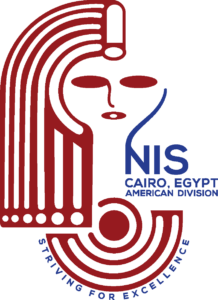Nefertari American Science staff mission is to encourage and prepare its students towards successful further study and lifelong contributions in the fields of Science and Technology.
To meet the challenges of the 21st century, our students must be critical thinkers, problem solvers, computer literate, and committed to school and community.
We accomplish this through a rigorous curriculum that is punctuated by college level coursework and that emphasizes interdisciplinary study, research, ethical and responsible leadership, global perspectives, and service.
Grade 1
Students will begin to learn about and investigate the things around them by observing and identifying living & nonliving things. They will acquire basic facts about plants and animals, weather and seasons. They will study sound and light.
Grade 2
Students will identify changes occurring during the growth process for plants, animals. They will learn about the earth’s surface. Students will also learn to identify changes of matter.
Grade 3
Students in third grade compare different life cycles and traits. Identify differences between fossils. Investigate relation between water and weather. Study motion, electric and magnetic forces.
Grade 4
In fourth grade, students focus on structures and functions of plants and animals. Examining human body systems, energy and waves. Also students study rocks, weather hazards, energy and collisions.
Grade 5
Fifth graders trace the relation between energy and food. Explore earth’s system, solar system and earth’s water. Focus on properties of matter and its changes.
Grade 6
Students investigate classification systems, weather in the atmosphere and rocks in the geosphere. Students study deeper matter, how to measure matter and states of matter.
Grade 7
Seventh graders continue to focus on cells, body systems. Students study electricity, magnetism and waves. Students also focus on ecosystems, populations and communities.
Grade 8
In grade 8, students will be introduced to atomic theory, periodic table, acids and bases. Students focus on speed, velocity & acceleration. Students investigate chromosomes and inheritance. They continue rocks and solar system objects.
Grade 9
In ninth grade, students will introduce to specialized courses covering, diversity of living things and levels of organization, chemical bonding and chemical reactions. Students study dynamic ecosystem. Students continue deeper in motion, electricity, waves and sound.
Grade 10 Chemistry
Grade 10 Chemistry course gives the student a sufficient background about chemistry that would qualify the student to the advance chemistry course that he would take in the upcoming high school years. Students study atoms, chemical formulas, chemical reactions, solutions, acids and bases.
Grade 10 Biology
The Biology course in grade 10 preludes a good introductory foundation for the Biology ACT II course. The curriculum courses different branches of biology including ecology, cellular biology, genetics, organismal biology.
Grade 11 Biology
The biology course in grade 11 comprises the advanced part of the ACT II Biology course. The curriculum includes Molecular Biology. Advanced parts of genetics, DNA, in addition to the rest of organismal biology and evolution.
Grade 11 Chemistry
Chemistry will cover the concepts of chemistry in matter properties and changes, periodic table, ionic and covalent compounds, chemical reactions, the mole and stoichiometric calculations. Students study nuclear chemistry, chemical equilibrium and electrochemistry.
Grade 11 & 12 Physics
Environmental Science will cover:
A high school course in physics is structured to fulfill the general goals as well as prepare students for the SAT II and ACT II. The syllabus covers motion in one and two dimensions, forces and motion, work and energy, momentum and collisions, circular motion and gravity, vibrations and waves, sound and light, electrostatics, and electric circuits and electromagnetism.


